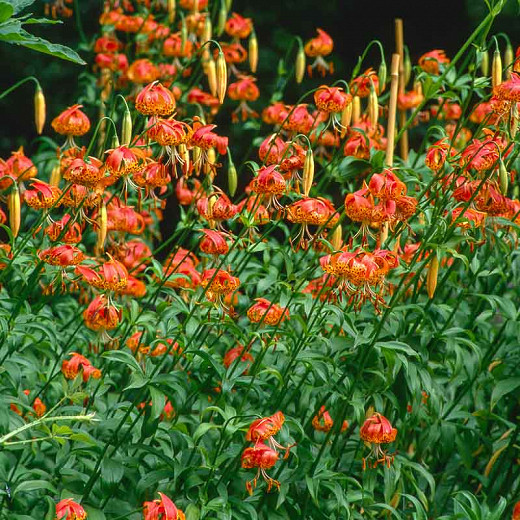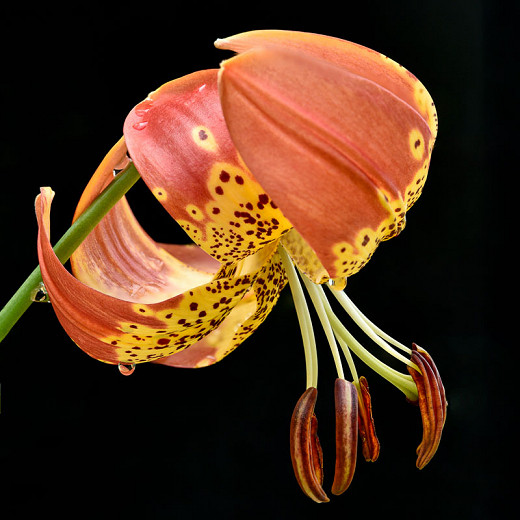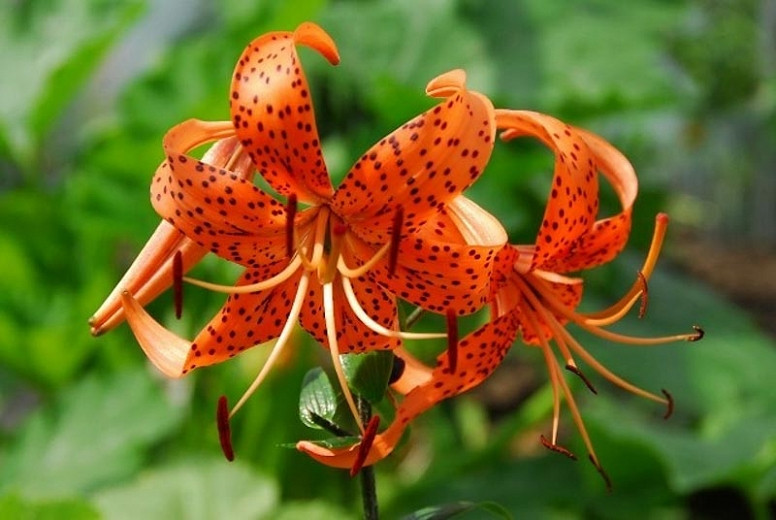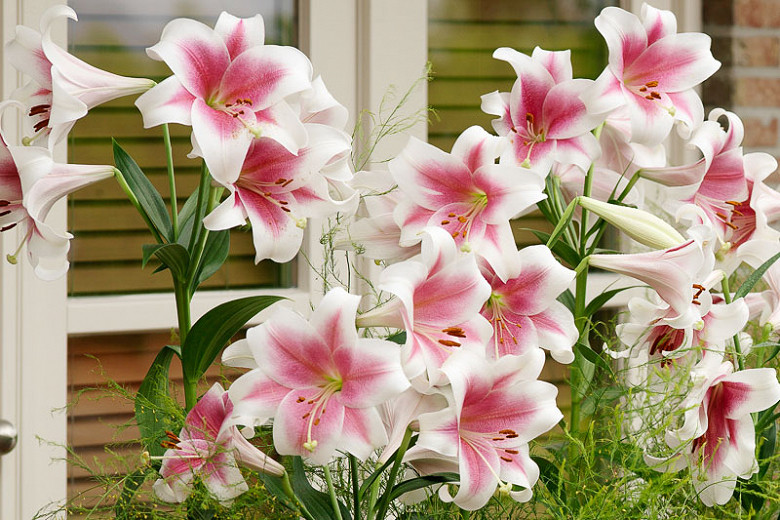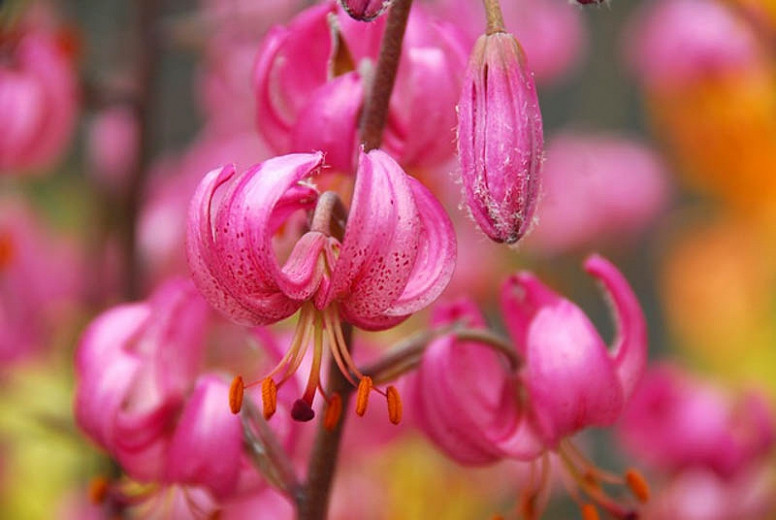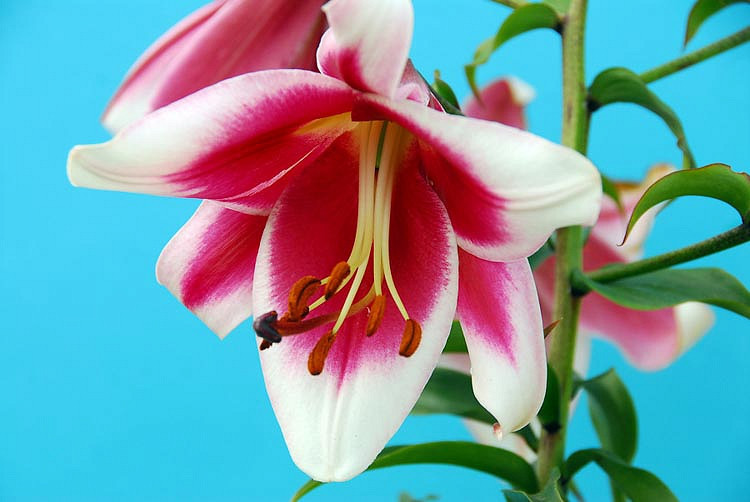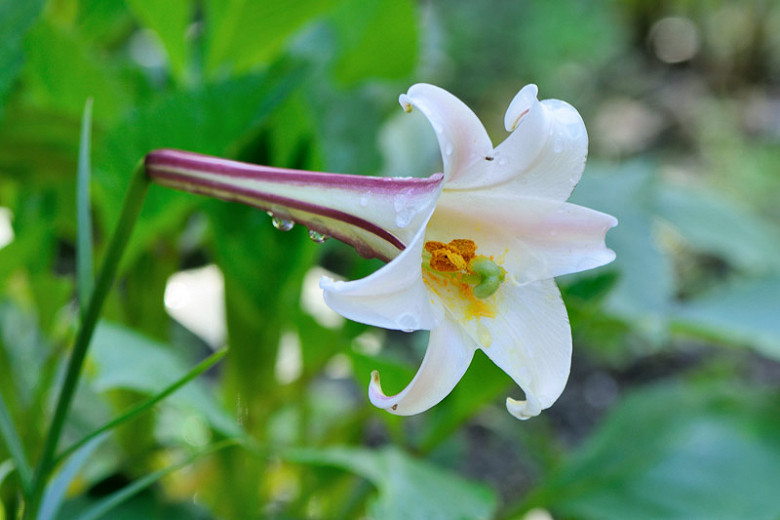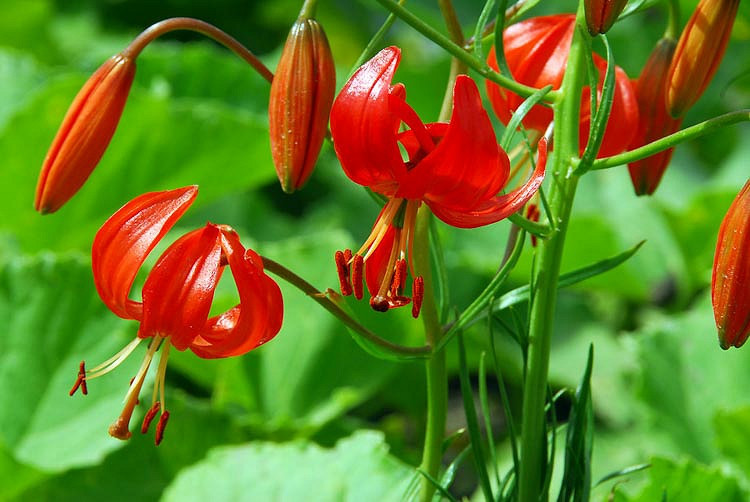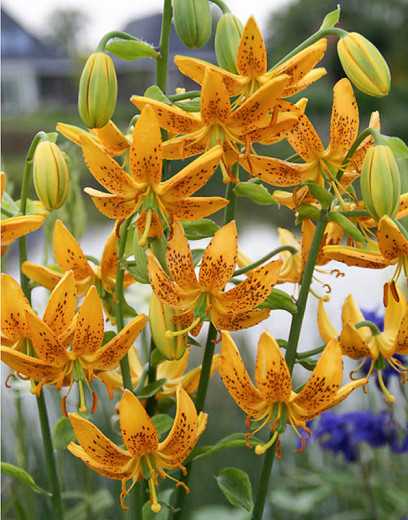Lilium pardalinum (Leopard Lily)
Amazingly decorative, award-winning Lilium pardalinum (Leopard Lily) is a robust bulbous perennial forming a clump of stout, upright stems bearing whorls of long, narrowly elliptic leaves. From late spring to midsummer, nodding, orange-red Turk's cap flowers, 3 in. across (9 cm), shading to yellow near the center can be admired. They are covered with brown spots, giving the appearance of the skin of a leopard or panther, hence its common name. One stem can carry up to 10 blossoms. Native to the Pacific Coast (southern Oregon to southern California), Leopard Lily is a woodland species, often found growing near streams. It spreads by creeping, rhizomatous bulbs to form charming and graceful colonies. It is a welcome presence in the garden, and you will find yourself admiring these breathtaking blooms again and again.
- Recipient of the prestigious Award of Garden Merit of the Royal Horticultural Society
- Grows up to 6-8 feet tall (180-240 cm) and 6 in. wide (15 cm).
- Performs best in full sun to part shade in moist but well-drained soils, enriched with leaf mold or well-rotted organic matter.
- Leopard Lily is well suited to beds and borders or cottage gardens. Excellent fresh-cut flowers.
- Keep an eye out for lily beetle, aphids, slugs, vine weevil, and gray mold.
- Propagate by seed, sown, when ripe, in containers in a cold frame or separate offsets after the foliage dies down.
- Toxic to cats (though not for dogs or any known species)
- Leopard Lily is a member of the Species and cultivars of species Division (IX) which includes all species and their subspecies, varieties, forms, and cultivars selected therefrom (excluding those derived from formosanum, longiflorum, philippinense, and wallichianum). There are 9 different types of lilies classified by the Royal Horticultural Society. And they are all real eye-catchers!
- Native to Oregon, California, and Baja California.
Requirements
| Hardiness | 5 – 8 |
|---|---|
| Heat Zones | 5 – 8 |
| Climate Zones | 2, 3, 4, 5, 6, 7, 14, 15, 16, 17 |
| Plant Type | Bulbs, Perennials |
| Plant Family | Lilium – Lilies |
| Exposure | Full Sun, Partial Sun |
| Season of Interest | Spring (Late)Summer (Early,Mid) |
| Height | 6' – 8' (180cm – 240cm) |
| Spread | 6" – 8" (15cm – 20cm) |
| Water Needs | Average |
| Maintenance | Low |
| Soil Type | Chalk, Clay, Loam, Sand |
| Soil pH | Acid, Alkaline, Neutral |
| Soil Drainage | Moist but Well-Drained, Well-Drained |
| Characteristics | Cut Flowers, Plant of Merit, Showy |
| Native Plants | United States, California, Pacific Northwest, Oregon |
| Attracts | Bees, Butterflies, Hummingbirds |
| Garden Uses | Beds and Borders |
| Garden Styles | Informal and Cottage |
